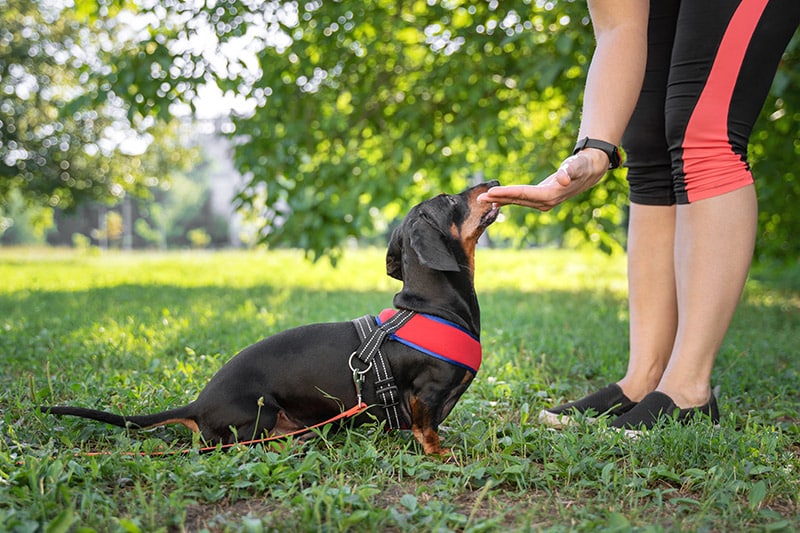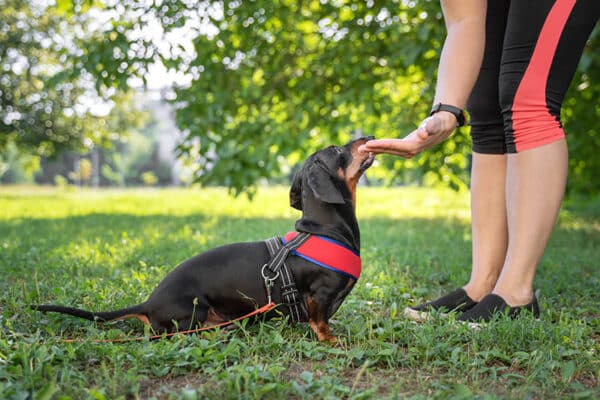Training your dog can be both a rewarding and complex process. Each dog will be completely different in the way that they interact and respond to your cues. If you have a particularly calm or alert dog, they could be very receptive to hand signals, while a more energetic or scattered dog won’t as easily. Utilizing hand signals can be very beneficial and it creates room for your pup to grow their knowledge. If you’ve already had a little training experience, you might want to take it to the next level.
What Are Hand Signals for Dogs?
If you think about it, dogs don’t speak English or any other language. They communicate through a limited portion of vocalizations and body language. So it’s no surprise that they can be extremely receptive to different types of training that require no voice. In fact, dogs can respond to visual cues more easily than auditory ones. Dogs can make sense of hand signals with up to 92% accuracy. So, you can see how beneficial it could be if your dog were to learn.
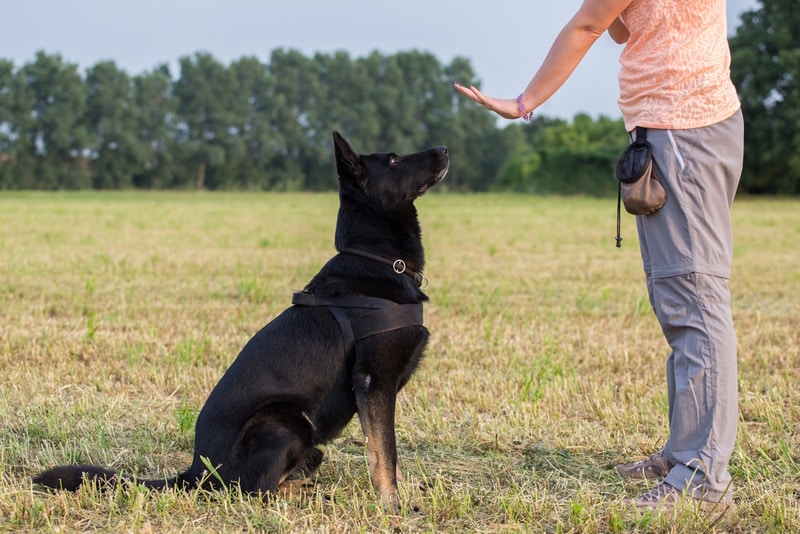
Why Should You Use Training Signals for Dogs?
Hand signals are fantastic as they give your dog another enrichment and training element. But that’s not the main reason why they can be so useful. The bottom line is that you’re going to want your dog to listen to you even in times of distraction. If you’re in a very noisy environment, and your dog understands hand signals, they can respond to what you want them to do without relying on your voice. It might take them a minute to master the distractions, but it is a much better way to get them to do what you want them to do in any given situation. 
The 10 Common Hand Signals for Dogs
Now, we’re going to learn the most common hand signals for dogs. Keep in mind that this is a very basic list and you can get much more advanced with your dog depending on how intense your training is.
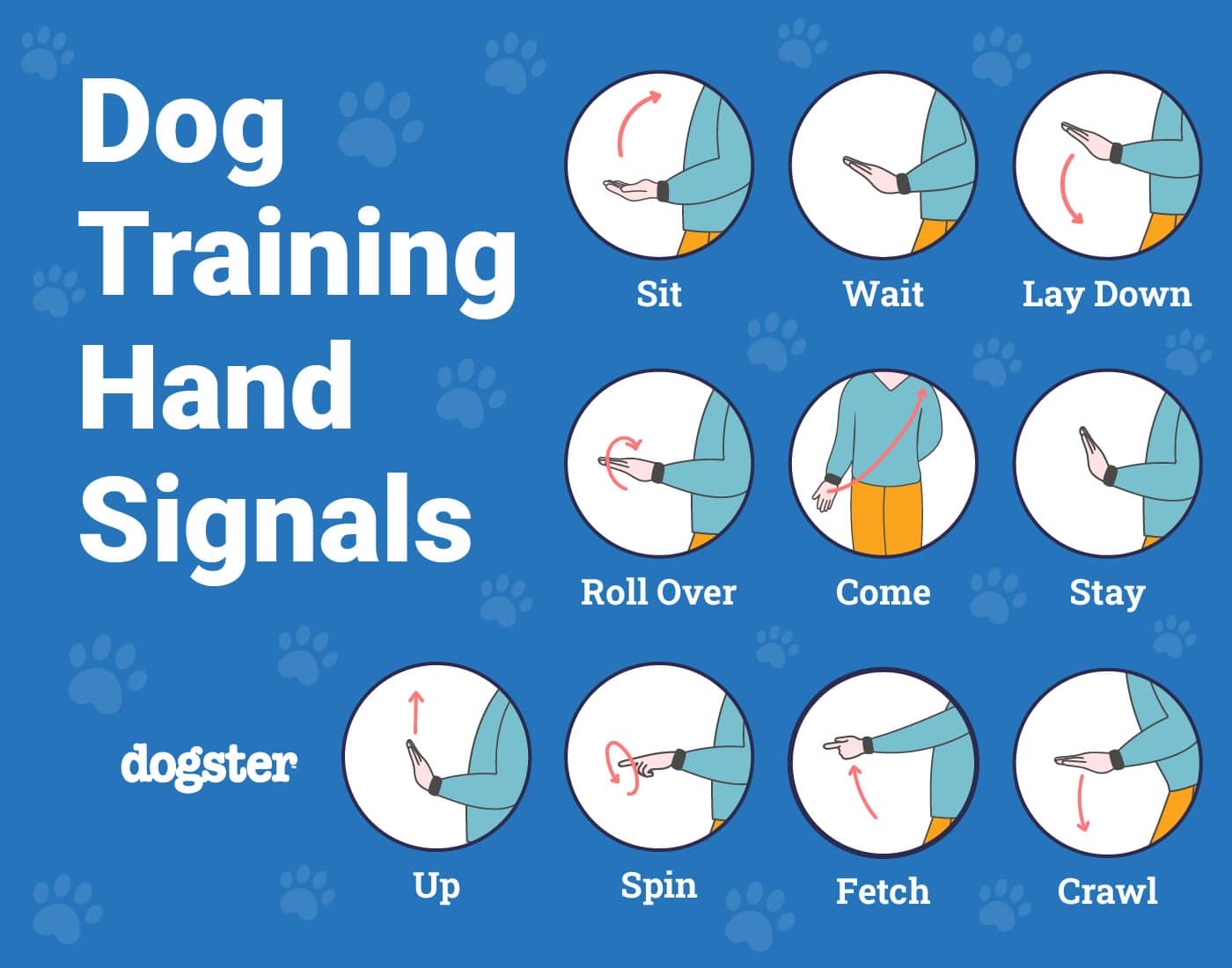
1. Sit
For a simple set command, hold out your palm facing up in front of your body and raise your hand towards your shoulder.
2. Wait
Hold out your hand that is roughly the height of your waist with your palm facing forward in front of you.
3. Lay Down
This is the opposite of sit. Put your hand with the palm facing out by your shoulder and sling your wrist down to signal the desired downward motion.
4. Roll Over
Basically, the hand sign for rollover is the motion you would do if you were explaining it to someone else. You simply extend one arm out, put your hand in front of you, and move your hand in a circular motion.
5. Come
Place your hand at your side with your palm facing up. Slowly take the arm and move it upward until it touches the opposite shoulder.
6. Stay
Make sure your dog is in the position you want them in. Then, hold out your hand with the palm facing away from your body and hold the position.
7. Up
This signal will tell your dog to lift their front paws and sit on their hind legs. Move an outstretched hand from the waist up to the shoulders with your palm facing out.
8. Spin
Hold your hand out in front of your dog’s face and move it in a circular motion by using a single finger.
9. Fetch
Start this command with your hand completely at your side. Raise your hand and point towards the object.
10. Crawl
This is identical to signaling them to lie down, only you will place your hand where you want them to crawl toward.
How to Get Your Dog’s Attention
Dogs require consistency and patience. You will need a way to get your dog’s attention before giving them the signals. For some, they use their name. However, this can be confusing and your dog might not associate it with training every time. However, if you use a single one-syllable word, such as “sit,” your dog might be more apt to recognize and understand the difference. While you’re working with your dog on the attention command, reinforce their progress with treats to motivate them to keep trying.
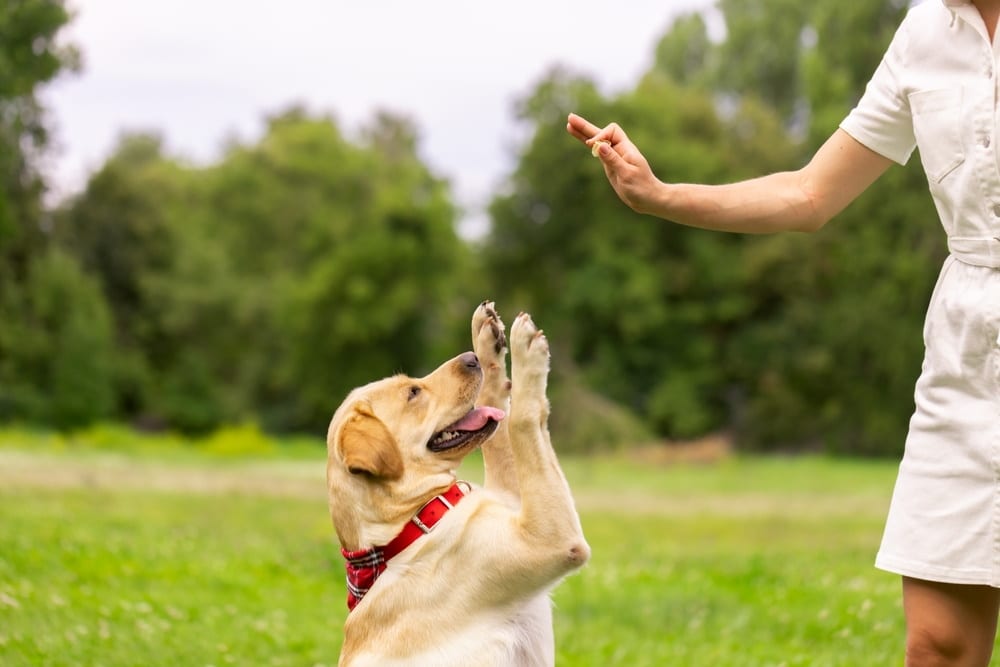
Opt for Professional Training
Not everyone is cut out for training their dogs. It’s a very complicated process and, honestly, quite frustrating for some. That’s why we have professional dog trainers on hand to help us when we can’t quite get it right. Most trainers suggest that you stick it out with your dog so that you can learn how to build that relationship with them. Once the trainer isn’t around, it’ll be a much more seamless transition. Training can vary in cost depending on different rates and locations. 
Conclusion
Now you understand the concept of using hand signals to train your dog a little more. It can be a very rewarding process and can greatly benefit you and your dog’s relationship in the future. If you want to learn more advanced hand signals, we recommend going through all of the basics and mastering those first. If you’re having trouble with training, remember that you can always ask for professional trainer recommendations so that you can learn with your dog in a controlled setting.
Featured Image Credit: Masarik, Shutterstock

